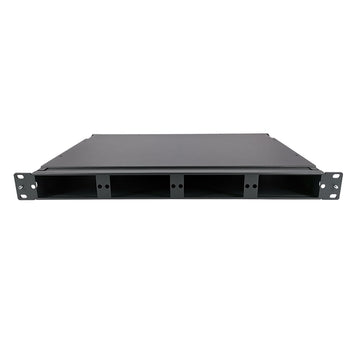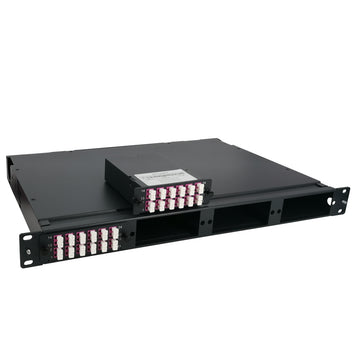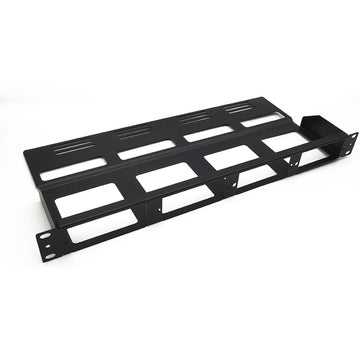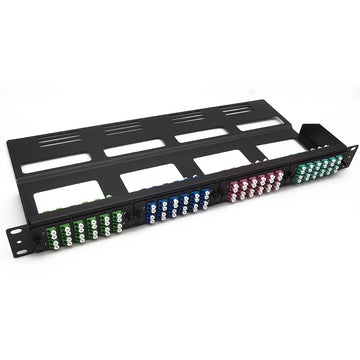Armoured Cable vs. Unarmoured Cable: What’s The Difference?
Armoured Cable vs. Unarmoured Cable: What’s The Difference?
With the rapid development of optical communication, in various environments, more and more fiber optic cables are being used. What if in harsh circumstances? Then ensuring that your cables are operated smoothly and reliably when transmitting data is crucial. That’s where the armored cable comes in. An armored cable is protected from mechanical damage, as its name suggests, while an unarmored cable is not protected. What’s the difference from each other? And why should we select armored cable?
What is the Amoured Cable?
Armoured cable has an extra layer of protection to keep it from being cut or abraded. The armor layer of coax cable is a foil wrap that is ribbed like corrugated metal to allow for flexibility, around the inside and outside of that wrap is a flooding compound to keep moisture from penetrating the cable and causing an impairment. The internal structure of 4 core armoured cable consists of many layers to prevent the cable from damage. The outer jacket provides protection against rodent, abrasion and twist, which is usually made of plastic. And the armoring materials are mainly come from kevlar, steel, and aluminum foils, aiming to protect the armored cable from being stretched during installation.
Difference Between Armoured Cable And Unarmoured Cable
Structure
Many people may think that armoured cable just has metal protection. To be precise, the armoring material doesn’t have to be metal, it can be fiber yarn, glass yarn, polyethylene etc. The only thing that makes armored cable different from unarmored cable is that the former has an additional outer protective layer for optical cable. The 4 core armoured cable tends to be more expensive than unarmored cable, while the armoured cable with steel strip and aluminum is much cheaper than armored fiber cable with Kevlar, which is usually used for special occasions.
Application
Armoured cable is installed in locations exposed to mechanical damage, such as on the outsides of walls, as an alternative to conduit. Armoured cable usually has a small metal ribbon to ensure electrical continuity of the safety ground. (You must run a separate ground wire in flexible conduit too; you can’t depend on the continuity of the conduit.) In HT & LT distribution, 4 core armoured cable is preferred. Inside walls and in other protected locations, less expensive unarmored electrical cable can be installed instead. Unarmoured cable is mainly used for control systems.
Why Should Use Armoured Cable Over Unarmoured Cable?
There are a couple of reasons that armoured cable should be used. The biggest reason is about strength, because armored cable was used more extensively in past decades when cable was simply directly buried under dirt and not used through a conduit. Nowadays most local municipalities require conduits to be trenched in prior to installing network components, thus eliminating the need for unarmored cable in most applications. Secondly, rodents or animals can and will chew through cables so the armor protects the cables from damage by animal or shoveling in direct bury applications. Thirdly, the most uncommon reason it would be used is in an RF environment that has an off air RF signal that is powerful enough to interfere with your network, the armor when grounded can provide another layer of RF protection.
Many people may think that only metal protection is available for armored cable. It may be fiber yarn, glass yarn, polyethylene etc. To be precise, the armoring material does not have to be metal. The only thing that distinguishes armored cable from unarmored cable is that the former has an additional optical cable outer protective layer. The4-core armored cable tends to be more expensive than unarmored cable, while the steel strip and aluminumarmored cable are much cheaper than Kevlar’s armoredfiber cable, usually used for special occasions.
Armored cable is installed as an alternative to conducting in locations that are exposed to mechanical damage, such as on the outside of walls. Usually,Armoured cable has a small metal ribbon to ensure the safety ground’s electrical continuity. (You also have to run a separate ground wire in a flexible conduit; you cannot rely on the continuity of the conduit.) In the HT & LT distribution, you prefer 4 core armored cable. Instead, less expensive unarmored electrical cable can be installed inside walls and at other protected locations. Unarmoured cable is used primarily for control systems.
Conclusion
Armoured cable can be regarded as a kind of strengthened cable, which is harder and stronger than standard optical cable. With an unparalleled protection against physical damage without sacrificing flexibility or functionality within fiber networks, 4 core armored cable is a perfect addition to any fiber network in hazardous environments.












